
In India, veterinary service is a state subject, and state governments are the primary stakeholders for the implementation of central and state-funded programs related to animal disease control and delivery of last-mile veterinary services. As an additional investment, for the year 2019-20, the Government of India has already given administrative approval of Rs.500 crores for the implementation of a significant Central Sector Scheme viz the ‘National Animal Disease Control Programme (NADCP) to control two critical diseases: Foot and Mouth Disease and Brucellosis. The amount released is out of the total cabinet-approved budget of Rs.13,343 crores for the NADCP till 2024.
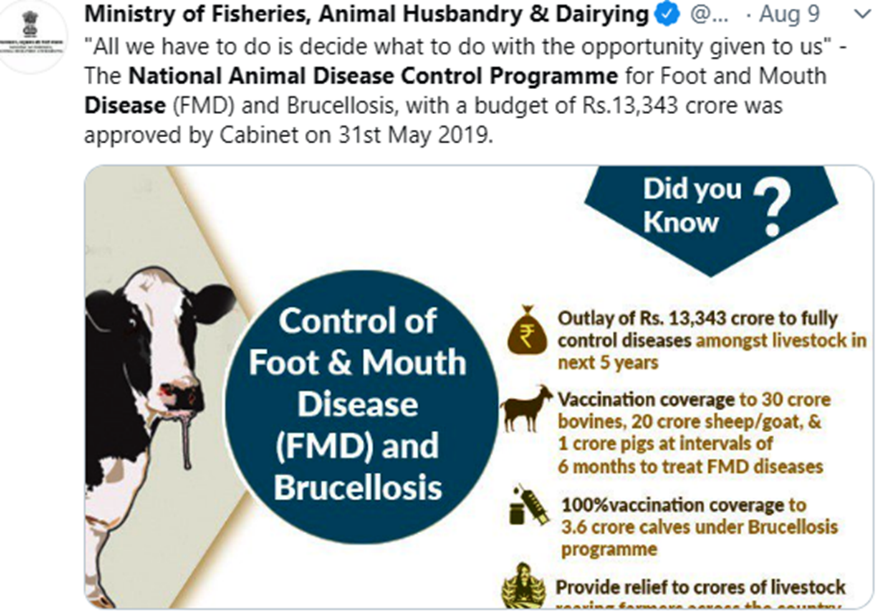
Figure 1 Tweet of Ministry of Fisheries, Animal Husbandry & Dairying, Government of India announcing cabinet approval for National Animal Disease Control Program (NADCP )
The opportunity given by a Central Sector Scheme of this magnitude must be utilized by all stakeholders to bring the required changes in the veterinary service delivery system in India. One of the vital areas is to ensure improved participation of the private sector in disease control efforts and the last-mile delivery of animal health care, livestock health products, and extension services. As indicated in the above tweet ( Fig 1 ) of the Ministry of Fisheries, Animal Husbandry, and Dairying, the government will do well by making firm and prompt decisions regarding the use of various available policy tools that can promote private participation. Fig 2 below summarizes the use of a few standard animal health-related policy tools in India that can augment private sector participation in veterinary service delivery.
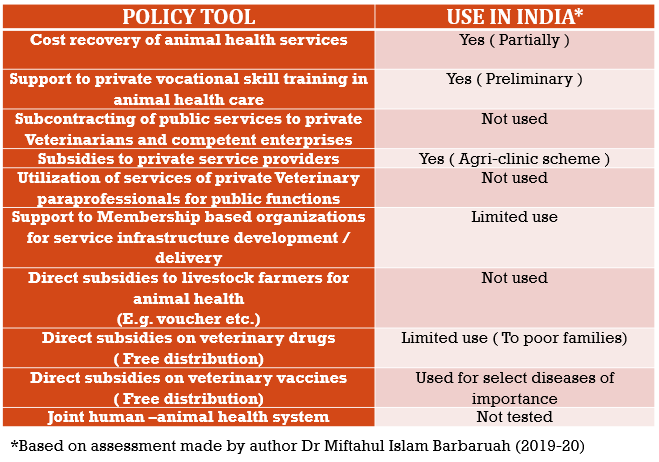
Figure 2 Summary of the use of a few standard animal health-related policy tools in India
As indicated in Fig 2, the government of India, in recent years, has taken some initiatives to promote private sector participation in veterinary service delivery. Private veterinarians can apply under the Agriclinic and Agribusiness Centres ( ACABC ) scheme of government for bank finance with subsidies to set up veterinary clinics. The midterm evaluation of the scheme started in 2002, however, indicated the establishment of only a few veterinary clinics. It is interesting to note that the same evaluation report suggests 45% as the average return on investment for a project related to the setting up of private veterinary clinics. A few of the reasons for the slow growth of private clinics can be price-based competition from the public veterinarian and inadequate availability of skilled and confident veterinarians capable of taking an entrepreneurial journey as private veterinarians.
Several NGOs, government-sponsored projects, and few companies are training private veterinary paraprofessionals (VPPs) and community animal health workers (CAHWs) in India. In recent years India has also declared national occupational standards for various categories of VPPs. Currently, the Agriculture Skill Council of India (ASCI) is facilitating private training providers to offer courses to meet the demand for skilled VPPs. However, there is a need to bring in more clarity on the definition, competency requirement, and regulation of various categories of veterinary paraprofessionals and CAHWs under the veterinary statutory body. The organized private veterinary service provider finds it challenging to recruit VPPs and CAHWs in India in the absence of a framework for their regulation and supervision by registered veterinarians.
Worldwide there are numerous examples of Public-Private Partnership (PPP) for disease control. The World Organization for Animal Health (OIE) has documented many such stories ( Fig 3 ). In India, GALVmed / Hester Biosciences Limited is working with a government-supported agency for the last-mile delivery of vaccines.
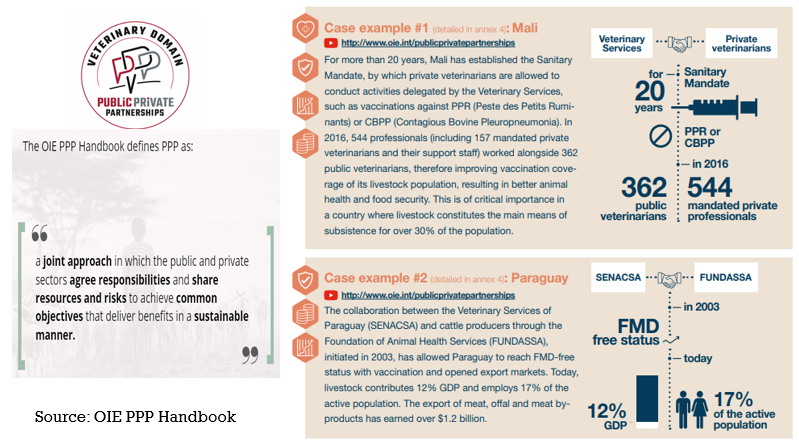
Figure 3 Few examples of Private sector partnership in animal Disease control as documented by OIE
India already has a legal framework to involve the private sector in animal disease control. Section 9 of the Prevention and Control of Infectious and Contagious Diseases in Animals Act, 2009 empowers Directors of Veterinary Services in various states to notify any institutions, agencies, and persons competent to vaccinate animals and issue vaccination certificates.
Some of the areas where the private sector can help in animal disease control include:
- Farm premises registration and capturing of health events.
- Implementation of Bio-security and Good Animal Husbandry Practices
- Veterinary service delivery through Veterinarian / Veterinary Paraprofessional partnership.
- Quality vaccine production and last-mile delivery of the same.
- Increasing the Vaccination coverage (e.g., Help in social marketing, etc. )
- Delivery of digital vaccination certificate to farmers.
- Reporting of diseases and management of disasters.
- Collection and dispatch of samples for diagnosis.
- Data analysis and disease/vaccination mapping.
The state governments should adopt innovative veterinary service delivery models that give ample scope to the private / non-government sector to contribute. Fig 4 to 6 summarizes some of the models related to veterinary service delivery for different situations suggested for implementation in Assam, India under the Assam Vet Roadmap project of the Department of Animal Husbandry and Veterinary, Government of Assam.
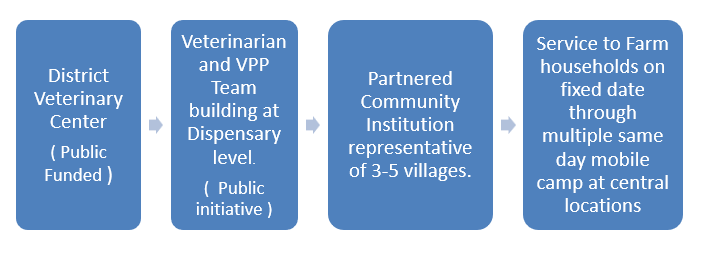
Figure 4 A model for veterinary service delivery in non-cluster areas ( areas with dispersed and mostly backyard farms )
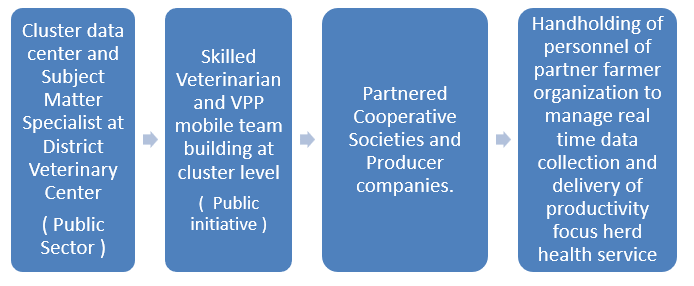
Figure 5 A model for veterinary service delivery in production clusters ( area with a concentration of commercial farms)
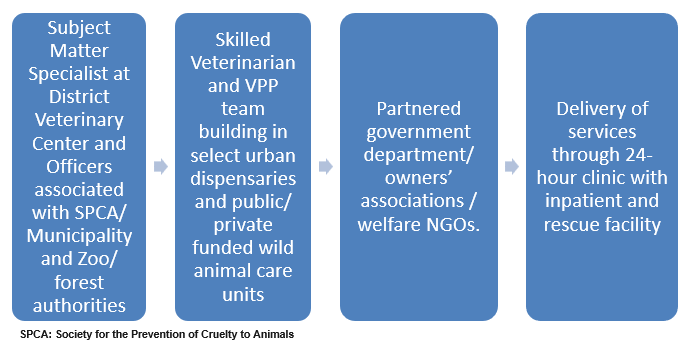
Fig.6 A model for veterinary service delivery to companion, sport, work and wild animal
By involving private companies, NGOs / Community organizations/ cooperative societies, State Veterinary Departments can enhance the reach of their services.
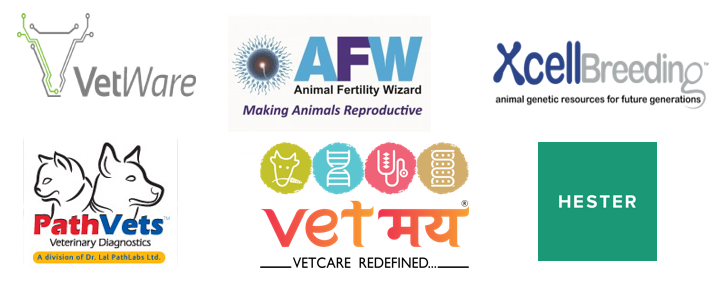
Figure 7 Few examples of private companies active in the veterinary-related service sector in India
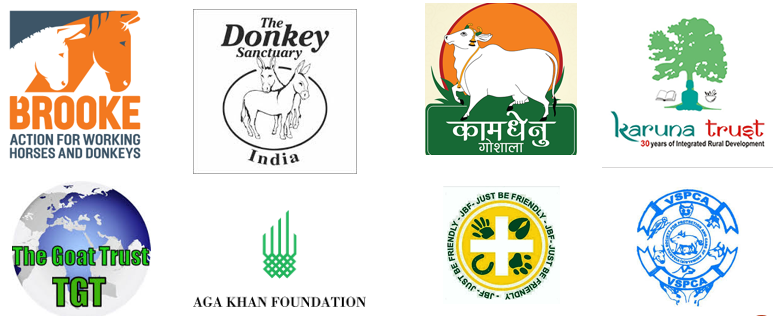
Figure 8 Few examples of Nonprofit organizations active in the veterinary-related service sector in India
There are limited numbers of private organizations (Fig 7 and 8 ) in India who are engaged in veterinary service provision. India does not have a reliable database of private sector veterinary service providers (individuals/companies/NGOs ). The following are a few examples of some credible sources to develop such a database.
- NABARD (Agri-clinic and Agribusiness Centres Scheme)[1]
- NGOs with veterinary services network (NGO DARPAN, NITI Aayog)[2]
- Milk Producers Institutions with independent service arrangements
- Goshala ( protective shelters for cows ) with independent service set up.
- Associations of Private Practicing Veterinarians.
- Association of retired veterinarians of Remount Veterinary Corps ( RVC) and Central Armed Police Forces (CAPF), e.g., ITBP, BSF, CRPF
- Veterinary / Para-veterinary Pensioner’s Associations.
- Industry associations within the feed, pharmaceutical, and other related sectors.
Social media can also be a tool to identify potential private organizations. Many qualified veterinarians are working with private medical colleges across the country, and the government can tap this resource for help in zoonotic disease control.
The government should conduct a participatory assessment of the willingness, current activities, geographical spread, need, and capacity of private sector service providers. Such assessment can be the first step towards developing a more focused national plan of action for incentivizing and capacity building of the private sector for animal disease control and last-mile delivery of veterinary services.
References:
- Mid-term evaluation of Agriclinic and Agribusiness Centres ( ACABC ) scheme
- Work of GALVmed / Hester Biosciences Limited for the last-mile delivery of vaccine
- OIE PPP Handbook
- PANORAMA-OIE ( issue 2019-3 ) focused on the benefits of PPP in the veterinary domain, as seen by various key opinion leaders.
- OIE webpage on Public-Private Partnerships (PPPs) in the veterinary domain.
[1] http://www.agriclinics.net/scheme-home.htm
[2] https://ngodarpan.gov.in/
( The author expresses thanks to Dr. Isabelle Dieuzy Labaye and Dr. Rahul Srivastava for reviewing the article )
Citation:
Barbaruah Miftahul, Imperative for Private sector participation for animal disease control and last-mile veterinary service delivery in India, The Vet Helpline E-magazine, Category: Livestock Policy, Planning, and Projects, Vol VIII (2020) ISSN 2454-9282


